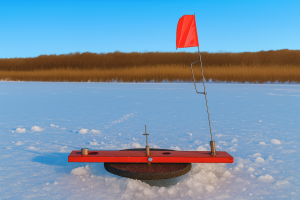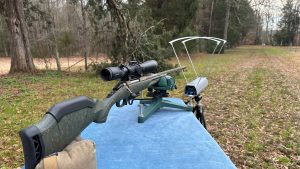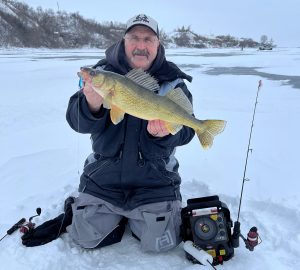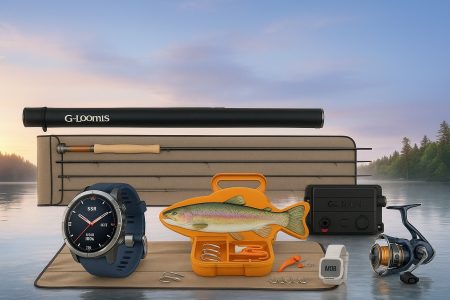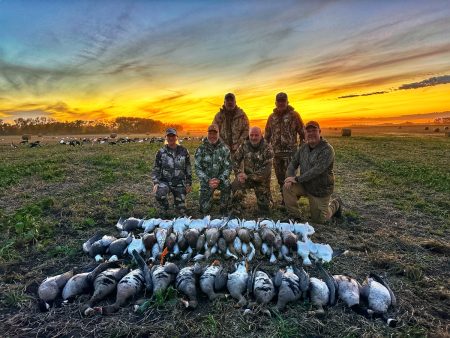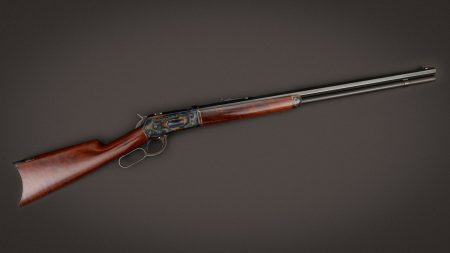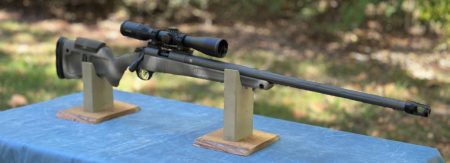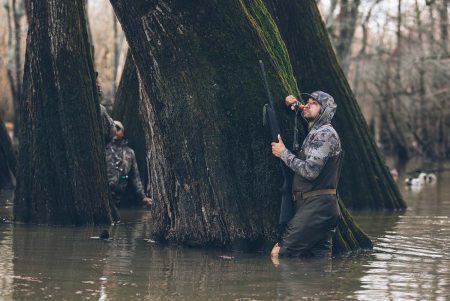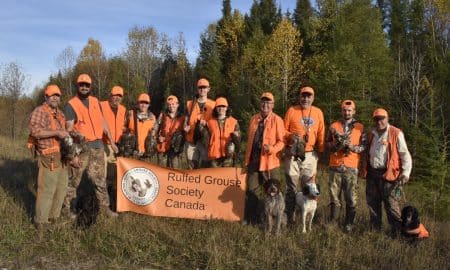I’ve hunted with Mike Stroff and SOE Hunts many times. I’ve never gone home empty-handed, from whitetails to axis to hogs and turkey. Stroff and his team at SOE Hunts run a first-class operation, and it was for that reason, and because Stroff and I have become such good friends over the years, that I eagerly accepted his invitation.
A few years ago, Stroff stumbled into some prime New Zealand real estate—thousands and thousands of acres of rugged mountain peaks and less-aggressive low country full of monster tahr and enormous red deer.
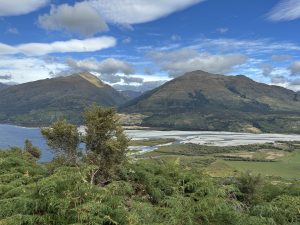
“Dude, you gotta come check it out,” Stroff told me at the 2025 SHOT Show in Las Vegas, Nevada. “It’s so beautiful, and we have some really amazing hunting. You should bring your wife and come have an awesome time.”
Three months later, my bride of 22 years and I gripped the seats of Stroff’s truck tightly as we sputtered up high mountain passes on what seemed to be the wrong side of the road.
“It takes some getting used to,” Stroff said with a chuckle. “It still freaks me out from time to time.”
Gray smoke eeked from a chimney and danced in the fall breeze before blending into the greywacke and schist of the McKerrow Mountain Range. We hadn’t even made it into the lodge, and my wife and I were already wide-eyed. New Zealand’s McKerrow Range is rugged and beautiful, like something out of The Lord of the Rings.
The accommodations are first-class, the food is excellent, and the New Zealanders—called Kiwis—are the nicest people on earth.
I’m an elk-hunting fanatic! Every year, I hunt elk across the West in September and October. Hunting New Zealand’s red deer is a lot like hunting elk. The males, called stags, roar during the rut, which the Kiwis refer to as the “roar” that occurs from March to April. Remember, New Zealand is in the Southern Hemisphere, which means March is fall.
I followed my guide, Tony, up into the mist on our first morning’s hunt. The vegetation was over our heads at times, and the going was slow and steep, but that’s what I wanted. I love challenging hunts—the more gnarly the terrain, the better.
While we walked, I heard what sounded like an African lion, which I had heard in the wild, blended with that of a bovine. The guttural bellow echoed across the low range, making the hair on my neck stand up.
Tony turned around, saw my eyes, and said, “Mate, I’ve heard that sound a million times, and every time is like the first. They are so damn cool.”
Minutes later, I was prone, the Savage .300 Win. Mag topped with Leupold’s VX-6HD Gen 2 3-18×44 scope pressed into my Alps OutdoorZ Elite Frame + 3800 backpack. The stag’s headgear was so big I wondered how he carried it through such heavy underbrush and rugged terrain. The range was 260 yards. Perfect! My crosshairs were settled on the stag’s shoulder while Tony evaluated him.
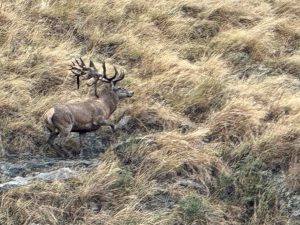
“Nope, sorry mate, but that stag is a Gold Medal,” was Tony’s response.
Stroff offers different packages for stag, and my package was for a low-end Silver or a Bronze stag. Still, the experience was terrific. Watching that stag make a series of short, intense roars while scanning the valley below is forever burned into my brain. I was in my own little world, reaching for my Sony camera when Tony tapped me twice, hard, on the shoulder.
“Turn around slowly,” he said, “and look uphill.”
Sure enough, a beautiful Bronze stag was less than 100 yards away, looking down on the Gold Medal stag. Sadly, by the time I could get turned, the stag above us wised up and moved off. Like an elk in dense, dark pines, the stag vanished. He was less than 100 yards away, and we never saw or heard him again.
Tony, my cameraman, Stephan, and I walked 12 miles with 2,200 feet of vertical gain that first day. It was awesome! The roar had just begun, and much like elk during the first week of September, vocal activity occurred during the first few hours of the morning and the last few hours of the evening. During midday, stags bedded in deep cuts in the manuka, which is comparable to a small evergreen shrub.
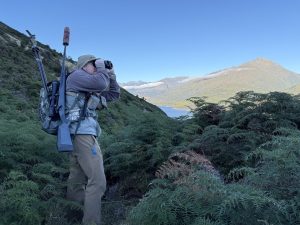
We spent most of the day hiking, glassing, and having a great time laughing. Tony is a riot, and I’m honored to call him a friend. We did get on another Bronze stag right at dusk, but the combination of low light and the shot distance kept me from taking the shot.
Day Two
Tony had a different plan for the second day. We spent the first hour of the first day climbing, using the downward-pulling thermals to work our way up to where Tony had seen some nice stags. The plan worked beautifully; too beautifully as it turned out. Lord, that first-day stag was a giant!
Day two had us slipping along a flat two-track road. The ridge above us was alive with roars, and the closer we got, the harder my heart thundered.
Suddenly, Tony dropped to his knees and said, “There, mate, that stag there is the one you want.”
The stag’s horns blended well with the dark green foliage, but it didn’t matter. Tony said he was the one, so he was the one. Tony is a fine guide and an excellent hunter.
We moved slowly, cautiously inching toward the stag, using every bush and tree to mask our approach. With the Savage on the sticks, I settled the crosshairs high on the stag’s shoulder. Then, just as I was squeezing, he turned and faced away. I heard Tony sigh. He wasn’t upset with me, but he knew how close the trigger was to breaking.
I’m not sure if our wind switched briefly or the wise stag caught some movement, but he started walking away after he turned. The walk turned into a lope, and I struggled to keep the crosshairs on him as he moved in and out of the dense cover.
Luckily, he decided to stop and give one last look back in our direction before he went over the ridge. Tony gave the range, and I squeezed the trigger. I came out of the scope momentarily, so I didn’t see him crumble, but Tony did, and Stephan captured it all on video. The shot was perfect, and the stag was dead before he hit the ground.
The climb up to the stag was brutal. There was no easy way. There was no road or trail, just dense brush and a vertical climb. I didn’t care. Neither did Tony.
The stag was magnificent, a stud of a low-end Silver, and he had excellent mass and, as Tony so eloquently put it, “sweet-ass” crowns. His body was massive, not as large as a mature bull elk but much bigger than a mule deer.
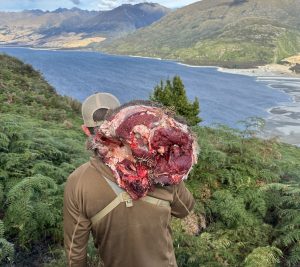
The packout was easy, mostly. By the time Tony, Stephan, and I made it to the stag, we’d carved a decent trail into the bush. The pack out was all downhill, and it was pure joy, all except for the head and cape. There were no small trees to cut down to use as a brace between the horns, which meant I had to carry the cape and horns out by hand. We tried tying the skull to the top of the pack and letting the horns hang down. It would have worked, but with each step, the horns tangled with the brush. This meant holding the horns with both hands out in front of my body and carrying them down the mountain. It was a chore, and my biceps have never burned so bad.
Time for Tahr
In 2021, I harvested a once-in-a-lifetime Rocky Mountain bighorn sheep with my bow on public land. Since I’ve been infatuated with sheep and goats. This is due in part to their regal nature and the hellish terrain they call home.
Don’t get me wrong, heck, I began this article talking about how I’m an elk guy. I most certainly am, but for me, mountain-dwelling species of sheep and goat take the cake.
Mike Stroff and SOE Hunts have the best Himalayan tahr hunting on New Zealand’s South Island. Yes, I know that’s a bold statement, but it’s true. If you want to harvest a mature bull tahr with your bow, rifle, crossbow, etc., you need to give Mike a call.
For this stage of the adventure, Mike would be my guide, which I was excited about. Mike and I hunt well together, share similar interests, and have had some incredible hunts over the years.
Mike loves bowhunting tahr, and he’d been watching this band of eight studs for over a week.
“That’s what they do every evening,” Stroff said as he peered through his Bushnell spotting scope at the over a mile away band of bulls. “They walk down that knife-edge ridge. You’ll know they’re coming because it’s been so dry this year, and the trail has been beaten to a fine, powdery dirt. You’ll see puffs of dirt—they look like little puffs of smoke—drift over the ridge. When you see the dirt fly, you need to start getting ready. It won’t be long, and they will be on that mountain face and should be within bow range.”
The walk up the mountain was steep, and I loved every second of it. One piece of advice if you choose to hunt in New Zealand: Get in the best physical shape you can beforehand. The going is tough, and the better shape you’re in, the quicker you can move to the game and the more you’ll enjoy your hunt.
The wind was out of the north, which was perfect, and though a lone, small bull didn’t allow us to get exactly where we wanted, Stephan and I slid and inched down the steep slope while Mike baked in the New Zealand sun, trying desperately to stay hidden from the lone bull.
An hour passed, and then another two. Then, I saw it: a single puff of dust rolling on the north wind. Another, and then another, followed that puff. The tahr were on their way, and before I could blink, a gagger of a bull stood atop a massive boulder, his thick, long mane blowing in the wind. It was a fantastic sight; one my hunting brain calls on often.
Another bull followed that bull, and another followed that bull. In minutes, the once barren mountain slope was dotted with tahr. There were big ones and small ones; all bulls, as the rut was two months away. Agile and graceful, the bulls played on the rocks, nibbled at the less-than-inch-high grass, and bumped each other around with their horns.
Before long, Stephan and I were surrounded. We had tahr in front of, below, and above us. The ones above us were working downward, which meant they would soon get our wind. At 61.5 yards, which was the same distance I harvested my bighorn sheep from, I came to full draw on the biggest tahr in the bunch. The tahr was on alert, and I expected him to duck at the shot. He didn’t. Thank God for SEVR’s 1.5-inch 4-Blade Hybrid broadhead. The heads’ blades hit vertically and took out the bottom of the bull’s heart.
Packing that tahr off the mountain was pure joy. It was a memorable evening in a special place with two very good friends.
Final Thoughts
Don’t wait! That’s my advice to you. New Zealand is a land of immense beauty. The people are amazing, there is no shortage of adventure, and the hunting, especially on SOE’s property, is world-class. Give Mike Stroff a call today to set up the hunt of a lifetime.
On a sidenote, this is a place, even if your significant other isn’t a hunter, that you want to bring them. The hunting is rugged, but the accommodations are of the highest class. My beautiful bride spent her days reading, walking, and hanging out with Tony’s amazing wife, Vicky, at the world-renowned Makorora Country Cafe. We had the time of our lives, and there is zero doubt we will be heading back to New Zealand for another adventure with Mike and his team very soon.
Per our affiliate disclosure, we may earn revenue from the products available on this page. To learn more about how we test gear, click here.

